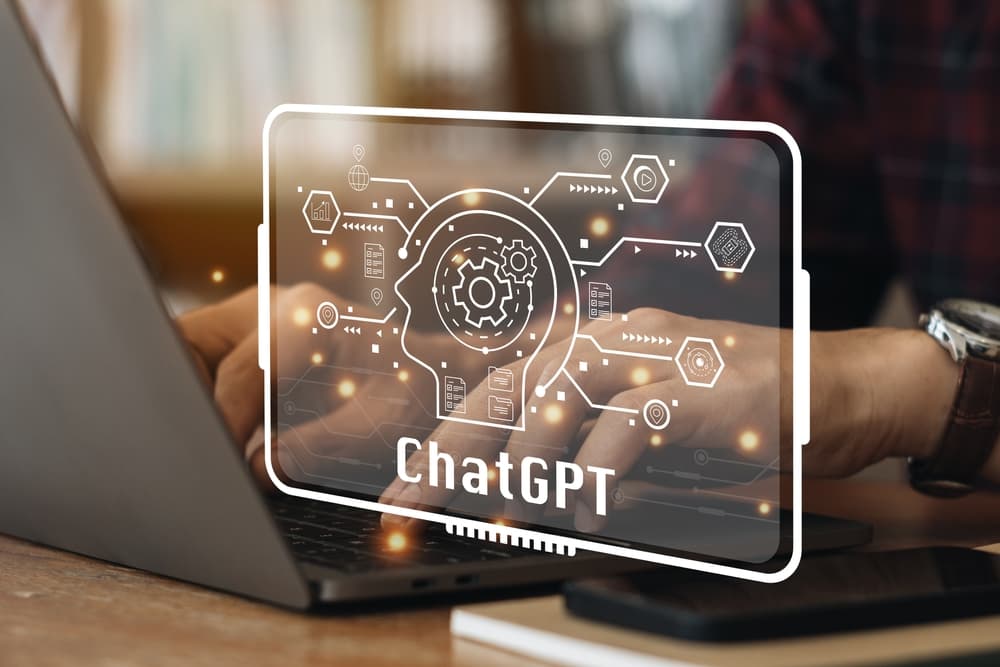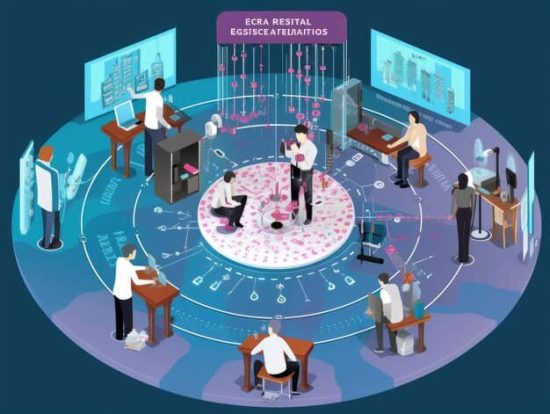AI full form is Artificial Intelligence that has revolutionized the way we interact with technology, and OpenAI leads the charge in this transformative journey, paving the way for a new era in the world of technology. With its advanced AI models like GPT-3, Codex, DALL-E, and Whisper, OpenAI has opened up a world of possibilities for creating AI-powered apps that can enhance user experiences and drive innovation across various industries.
Integrating OpenAI into Applications
OpenAI provides developers with the tools and resources to integrate its AI models into their applications seamlessly. Through the OpenAI API, developers can harness the power of GPT-3, Codex, DALL-E, and Whisper to create intelligent and interactive features within their apps. Whether it’s a user experience of applications to generating natural-sounding text, translating languages, transcribing speech, or creating visual content, OpenAI models.
Applications of OpenAI Models
The applications of OpenAI models are vast and span across numerous industries. From productivity and education to creativity and gaming, developers have leveraged the capabilities of OpenAI models to create innovative and intelligent apps. Let’s explore some real-world examples of AI-powered apps built using OpenAI’s models.
Viable: Understanding Customer Feedback
Viable, the app, is the key to unlocking valuable insights from customer feedback, empowering companies to make informed decisions. By utilizing OpenAI’s GPT-3 model, Viable can analyze customer surveys, live chat logs, reviews, and more to identify themes, emotions, and sentiments. The app then aggregates this feedback and provides easy-to-understand summaries, enabling companies to better understand their customers’ wants and needs.
Fable Studio: Interactive Storytelling
Fable Studio is revolutionizing storytelling with its interactive stories and virtual beings. By harnessing the power of OpenAI’s GPT-3 model, Fable Studio’s virtual beings can engage in natural conversations with users, creating immersive and dynamic storytelling experiences. This technology has the potential to redefine the future of entertainment and narrative-driven experiences.
Algolia: Advanced Search and Answers
In its Algolia Answers product, Algolia harnesses the power of OpenAI’s GPT-3 model to deliver search results that are not just fast but also highly relevant. By seamlessly blending GPT-3 with their cutting-edge search technology, Algolia enhances its ability to comprehend customer queries, ensuring a precise connection to the content that addresses their questions. This enables publishers and customer support help desks to provide accurate and meaningful answers to complex natural language queries.
These are just a few examples of how OpenAI models can be applied in real-world scenarios. The possibilities are endless, and developers can continue to explore and innovate with these powerful AI tools.
AI-Powered App Development with OpenAI
Developers can leverage OpenAI’s models to create AI-powered apps that deliver personalized and intelligent experiences to users. Whether it’s generating natural language text, providing real-time translations, transcribing speech, or creating visual content, OpenAI models can enhance the functionality and user engagement of mobile and web applications.
GPT-3 Model: Natural Language Generation
OpenAI’s GPT-3 model is a powerful tool for generating natural-sounding text. Developers can build apps that automatically generate stories, resumes, scripts, and more based on user input. For example, an automatic story generator app it weaves tales from the ground up, inviting users to submit their story ideas and tailor the characters, settings, and themes to their liking. This AI-powered app can provide a personalized storytelling experience to users.
Codex Model: Intelligent Code Generation
OpenAI’s Codex model is designed to interpret and generate code in various programming languages. Empowered developers can craft AI-driven apps capable of automating tasks such as financial analysis, data analysis, scientific research, project management, and beyond. For instance, an AI business app can generate code for financial analysis, forecasting, and budgeting, helping business analysts and accountants streamline their workflow and make data-driven decisions.
DALL-E Model: Visual Content Creation
OpenAI’s DALL-E model, a deep learning marvel, transforms textual descriptions into high-quality images. Developers wield the power to fashion AI-driven apps that autonomously craft artwork, fashion designs, 3D models, and beyond. Imagine a fashion app curating personalized style images from user input, offering unique designs and fashion-forward suggestions.
Whisper Model: Speech Recognition and Transcription
OpenAI’s Whisper model is an automated speech recognition solution that can be used to create AI-powered apps for speech-to-text conversion, voice-activated assistants, language learning, and more. For instance, envision a fashion app that crafts personalized images, tailoring unique designs and offering personalized outfit recommendations driven by user input.
- Enhancing Apps with OpenAI Models
By integrating OpenAI models into their applications, developers can enhance the functionality and user experience of their apps. OpenAI’s models provide intelligent and interactive features that can automate tasks, personalize content, and provide valuable insights to users. Here are some ways in which OpenAI models can enhance different types of apps:
- Productivity Apps
Productivity apps can leverage OpenAI models to automate tasks, provide intelligent suggestions, and enhance collaboration. For example, a note-taking app can suggest relevant information as the user types, making note-taking more efficient. An in-app search app can anticipate a user’s query based on their browsing history, providing autocomplete recommendations and tailored search results.
- Education Apps
Education apps can utilize OpenAI models to enhance learning experiences and provide personalized content to students. For instance, a language learning app can transcribe spoken words and provide real-time feedback on pronunciation and grammar. An e-book app can suggest relevant books based on the user’s reading habits, creating a customized reading experience.
- Gaming Apps
Gaming apps can incorporate OpenAI models to create immersive and interactive gameplay experiences. For example, a game can use OpenAI’s GPT-3 model to generate dynamic and engaging dialogue for non-player characters, making the gameplay more realistic and immersive. AI-powered game assistants can provide hints and strategies to players, enhancing their gaming experience.
- Healthcare Apps
Healthcare apps can benefit from OpenAI models by automating medical analysis, providing virtual assistants for patients, and improving patient care. Consider an assistive technology app utilizing OpenAI’s GPT-3 model to offer personalized assistance, enabling users to effortlessly schedule appointments and set reminders through voice commands. Accessibility apps can also transform written text into spoken language, facilitating users with low vision in accessing textual content.
These are just a few examples of how OpenAI models can enhance different types of apps. Developers can innovate and create unique experiences by harnessing the power of AI in their applications.
FAQs: AI-Powered Apps with OpenAI
- What is the role of OpenAI in AI-powered apps development?
OpenAI serves as a pioneering force in AI-powered app development by providing advanced models, such as GPT-3 and DALL-E, that empower developers to create applications with enhanced capabilities in various domains.
- How can developers integrate OpenAI’s models into their applications?
Developers can integrate OpenAI’s models by leveraging OpenAI’s API, seamlessly incorporating powerful language processing or image generation capabilities into their applications.
- What types of applications can benefit from OpenAI’s models?
Applications spanning a wide range of fields, including natural language processing, image generation, financial analysis, and more, can benefit from OpenAI’s models, fostering innovation and efficiency.
- Can OpenAI’s models be customized for specific use cases?
Yes, developers can customize OpenAI’s models to tailor them for specific use cases, allowing for personalized and industry-specific applications.
- How does OpenAI contribute to innovation in AI-powered artwork and design?
OpenAI’s DALL-E model empowers developers to craft AI-driven applications that produce top-notch images, artwork, fashion designs, and 3D models guided by textual descriptions. This not only sparks creativity but also fuels innovation in the realm of digital art.
- Are there any limitations to using OpenAI’s models?
Despite their potency, OpenAI’s models might encounter challenges in comprehending highly specialized or nuanced contexts. Developers should exercise caution and awareness of these limitations when integrating the models into specific applications.
- How does OpenAI support the ethical use of AI in app development?
OpenAI is committed to responsible AI development and encourages developers to adhere to ethical guidelines. They offer documentation and guidelines to encourage the fair and ethical utilization of their models.
- Can OpenAI’s models be used for real-time applications?
Yes, depending on the complexity of the application and the model’s requirements, developers can implement OpenAI’s models in real-time scenarios to enhance user interactions and experiences.
Conclusion
OpenAI’s AI models have opened up a new world of possibilities for app development. By integrating OpenAI models into their applications, developers can create AI-powered apps that deliver personalized, intelligent, and interactive experiences to users. Whether it’s generating natural language text, creating visual content, transcribing speech, or providing real-time translations, OpenAI models can revolutionize the way we interact with technology. The potential for innovation and advancement in AI-powered app development is immense, and developers have the opportunity to shape the future of technology with OpenAI.
For developers aiming to boost their app’s capabilities with AI, think about integrating OpenAI models and embark on a voyage of innovation and creativity. The possibilities are endless, and the future of AI-powered apps is just beginning to unfold. Embrace the power of OpenAI and revolutionize the way your users engage with your applications.




